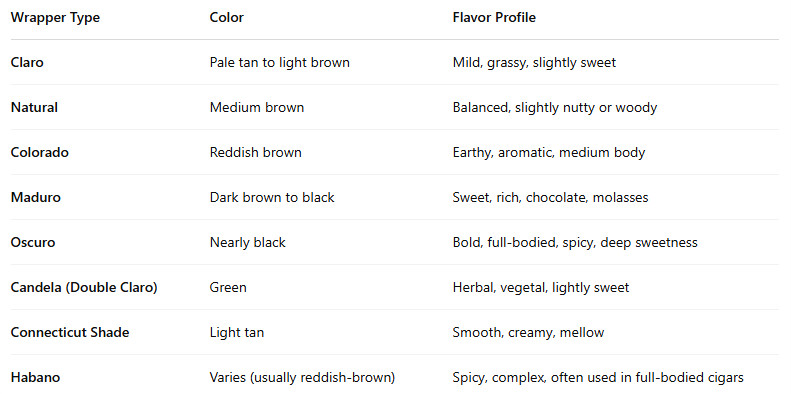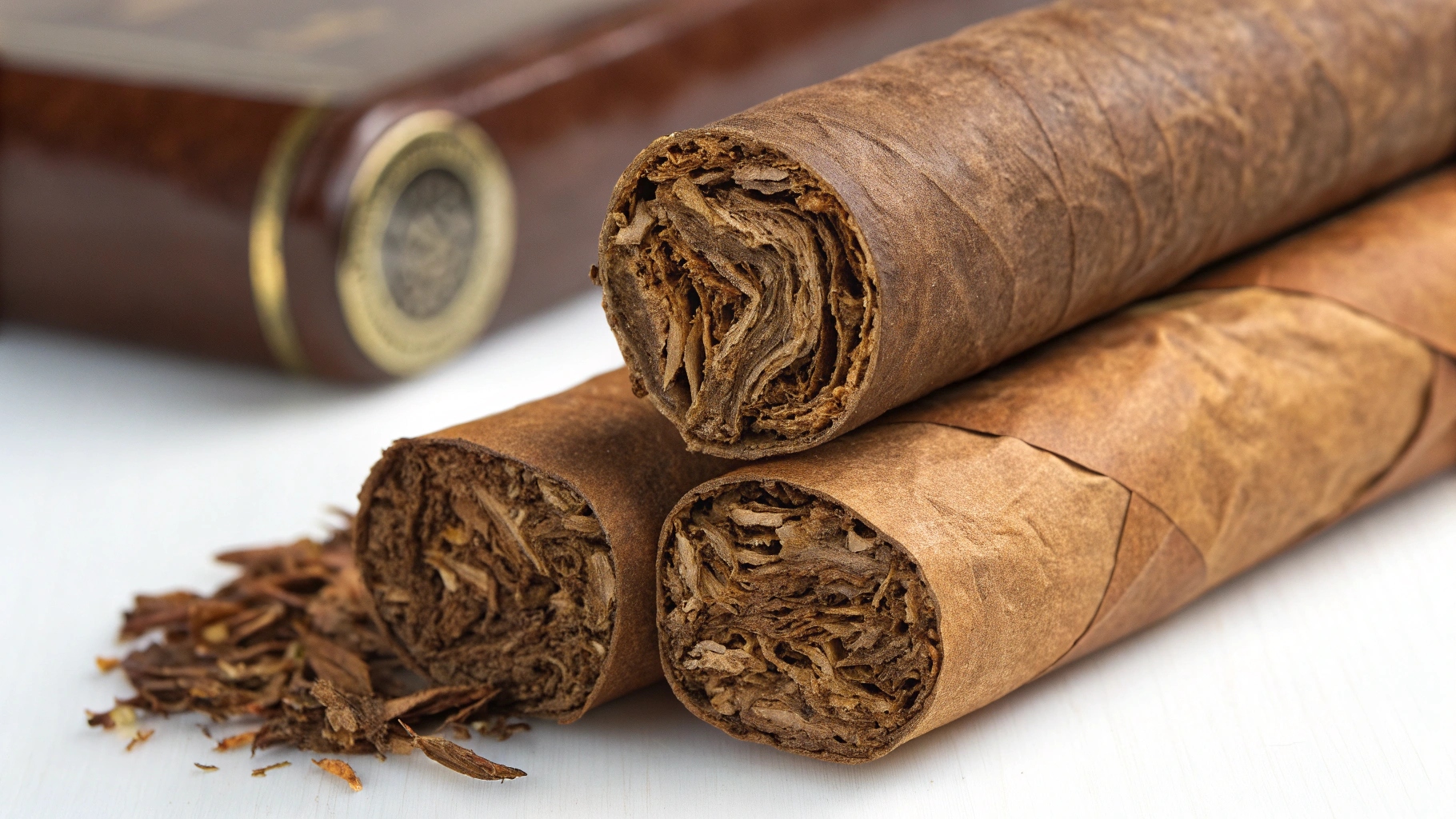To the untrained eye, a cigar may seem like a simple roll of tobacco, but beneath the surface lies a highly complex structure. A premium hand-rolled cigar is crafted from three distinct components—wrapper, binder, and filler—each playing a critical role in how the cigar burns, tastes, smells, and feels. Understanding these parts not only deepens your appreciation but helps you select cigars that suit your personal palate and preferences.
1. The Wrapper: The Face and Flavor of the Cigar
The wrapper leaf is the outermost leaf of the cigar—the part you see, touch, and taste first. It is usually a single, unblemished leaf grown under carefully controlled conditions to ensure smoothness and visual appeal.
Role in Flavor and Experience
While it’s just one leaf, the wrapper contributes 30–60% of the cigar’s flavor, depending on the blend. It often determines the cigar’s initial aroma, mouthfeel, and finish.
Wrappers are grown in various regions and can be either sun-grown or shade-grown. Shade-grown wrappers are smoother and lighter, while sun-grown wrappers are thicker and more intense in flavor.
Common Wrapper Types and Characteristics

Each wrapper is selected to complement or contrast with the binder and filler, creating a harmonious smoking experience.
2. The Binder: The Backbone of the Cigar
Lying directly beneath the wrapper, the binder is a thicker, more durable tobacco leaf that holds the filler together and gives the cigar its shape and structure. While less visually appealing than the wrapper, it must be elastic and resistant to tearing during rolling.
Role in Flavor and Construction
Binders contribute some flavor—usually neutral to mild—but their main job is structural. However, some binders can add earthy, spicy, or nutty notes, depending on the tobacco used and its origin.
High-quality binders help:
- Ensure a consistent burn
- Maintain the cigar’s shape during aging and smoking
- Regulate airflow and draw
Common binder origins include Dominican Republic, Honduras, Nicaragua, and Brazil.
3. The Filler: The Heart and Soul of the Cigar
At the core of the cigar is the filler tobacco—a blend of long leaves that determine the body, complexity, and burn rate of the cigar. This is where a master blender’s skill really shines.
Types of Filler Tobacco
- Ligero: Leaves from the top of the plant; oily, strong, and slow-burning. Adds strength.
- Seco: Mid-plant leaves; medium-bodied, good for aroma and flavor balance.
- Volado: Bottom leaves; mild and excellent for combustion.
Short Filler vs. Long Filler
- Long Filler: Whole leaves rolled lengthwise; found in premium cigars.
- Short Filler: Chopped tobacco scraps; used in machine-made or budget cigars.
Role in Flavor and Burn
Filler tobacco provides the depth and progression of a cigar’s flavor, often changing as the smoke progresses through different temperature zones. The blend can be all from one country (puro) or a mix of regions for complexity.
How These Parts Work Together
Imagine a cigar like a three-part orchestra:
- The wrapper is the soloist—bold and immediately noticeable.
- The binder is the rhythm section—keeping everything in harmony and on pace.
- The filler is the full symphony—offering layers, complexity, and nuance.
If one component is off, the whole experience suffers. A premium cigar relies on the balance between all three elements to deliver a slow, satisfying, and flavorful burn.
Tasting with Knowledge
Once you understand the anatomy of a cigar, every stick becomes more than a smoke—it becomes an exploration of craftsmanship, geography, and flavor. You’ll start to notice how a Connecticut Shade wrapper smooths out a spicy Nicaraguan filler, or how a Maduro wrapper amplifies the sweetness of a Dominican blend.
So next time you cut, toast, and draw—know that every part of that cigar has a purpose. And with each puff, you’re not just enjoying tobacco; you’re experiencing the result of art, tradition, and nature in perfect balance.
